“The Daughters of the Late Colonel” (1922) is a modernist short story by Katherine Mansfield, included in The Garden Party And Other Stories.
This story contains some classic horror tropes, and if you didn’t know what a barrel-organ sounded like before, here’s the creepy-ass thing. Honestly, I’d rather go to sleep listening to the tinkle of an ice-cream van driven by the clown from IT:
A perfect fountain of bubbling notes shook from the barrel-organ, round, bright notes, carelessly scattered.
Although Katherine Mansfield died at the tender age of 34 and so never lived long enough to experience the invisibilisation which comes to women around menopause, she must have either felt it as a younger woman or observed it in others. She did grow up in a household which included two unmarried aunts — younger sisters of her mother. Belle did eventually marry, around the time Katherine left New Zealand the second time, and if Claire Fallon’s biography is anything to go by, Harold Beauchamp (Katherine’s father, Belle’s brother-in-law) didn’t really like everyone leaving his home, where he had been surrounded by women (and lest we forget, so was King Henry the Eighth).
“The Daughters Of The Late Colonel” is the story of two middle-aged women in the process of fading away to invisible. Of particular note: While reading, take note of how Mansfield makes these two women appear to fade away before our eyes.

More specifically, this is the story of two spinster sisters who are the product of a controlling, abusive father. Though the story individualises these characters, Con and Jug map onto any number of women in any number of circumstances, because invisibilisation is part of the female experience when we live in a society which values women first and foremost for youth, beauty and child-bearing utility. Women are now able to leave home without marrying men. Though we don’t see this exact archetype much anymore, of two middle-aged spinster sisters who cannot leave the natal home, “The Daughters Of The Late Colonel” still feels like a contemporary story for its invisibilisation aspect.
DISCUSSION QUESTIONS FOR DAUGHTERS OF THE LATE COLONEL
These questions are by Ronald Walker, retired Professor of English at Western Illinois University and at present an independent scholar.
- The story begins with a short paragraph that concludes with an ellipsis. It takes place “the week after” — after what? What is it that they, the two daughters of the late Colonel, were “trying to remember where…”? Have they misplaced something? What is it that keeps them so busy during this week?
- Why are Josephine and Constantia “terrified” at their father’s funeral? Why do they think their father would not forgive them?
- What is implied by the descriptions of their father, for instance in section three? What is suggested by his single, open eye? By his stick? By his bellowing?
- Why does Josephine imagine that their father is watching them from the dresser drawer (after his death) “ready to spring”?
- The sisters seem to have just one other sibling, Bennie, who is now in Ceylon (today’s Sri Lanka) i.e., where the Colonel had also been posted. Cyril’s coming to tea with his aunts is regarded by them as “one of their rare treats”. In sections eight and nine we have a scene presenting one of those “treats”. Does it strike you as a social highlight?
- Why all the dithering about whether to give father’s watch to Cyril or his father Bennie? About dismissing their mouthy servant, Kate? About letting Nurse Andrews go without pay? and so on. Why can’t they make up their minds? Why so much difficulty taking action?
- What happens on the eighth day after their father’s death, when they hear the barrel-organ playing outside? How does the narrator suggest to us that here there may be a slight opening for hope? What do we learn about Constantine’s thoughts about her mother? What is implied by her memory of the mysterious man in the boarding-house at Eastbourne? Above all, what is suggested by her memory about lying alone on the floor in the moonlight, or singing by the sea? What do her own questions refer to: “What did it mean? What was it she was always wanting? What did it all lead to?” Compare these questions with the initial query about “remembering where…”
- How do these memories enhance the meaning of the last scene, in which both sisters start to say “something frightfully important” but defer to each other repeatedly until both forget what it was they wanted to say? What is it that they have forgotten?
- Of what importance is Mansfield’s inclusion of Ceylon in the story? It’s the British colony where the Colonel was posted, where the whole family lived before his retirement, where Bennie now lives and where Josephine had sent twenty letters to friends, with news of her father’s death. Is Empire an implicit issue in the story? Is imperialism analogous in some way with the patriarchal tyranny inflicted on these two women?
CAST OF CHARACTERS
Always being one.
Lizzie, 110 in the Shade, “Old Maid”
Never being two.
Re-arrange the furniture,
There’s nothing else to do.
Keep an empty house.
Watch your brothers wed.
Dream an empty dream at night
Upon an empty bed.
Old maid! Old maid!
CONSTANTIA pinner (con)
The hyper-empathetic sister, who feels so badly for an imagined mouse she wishes she’d left some crumbs for the mouse to eat. This must be partly because she identifies psychologically with a mouse: confined to the house, confined to sneaking around to avoid detection, condemned to surviving on life’s leftovers, in every conceivable way.
JOSEPHINE pinner (jug)
The older sister, shorter.
Though the appearance of Josephine is never described, the tall, thin sister plus short, round sister is such a common combo in fiction. We see it, for instance, in Kate DiCamillo and Chris Van Dusen’s Mercy Watson series with Eugenia and Baby. The softer, rounder one will be the more empathetic of the two, since skinniness correlates (in fiction) with meanness. DiCamillo’s invented name “Baby” is very obviously a sign that the middle-aged sister in the Mercy Watson stories has never grown up, but then, Kate DiCamillo was writing children’s books and needed to be obvious about it.
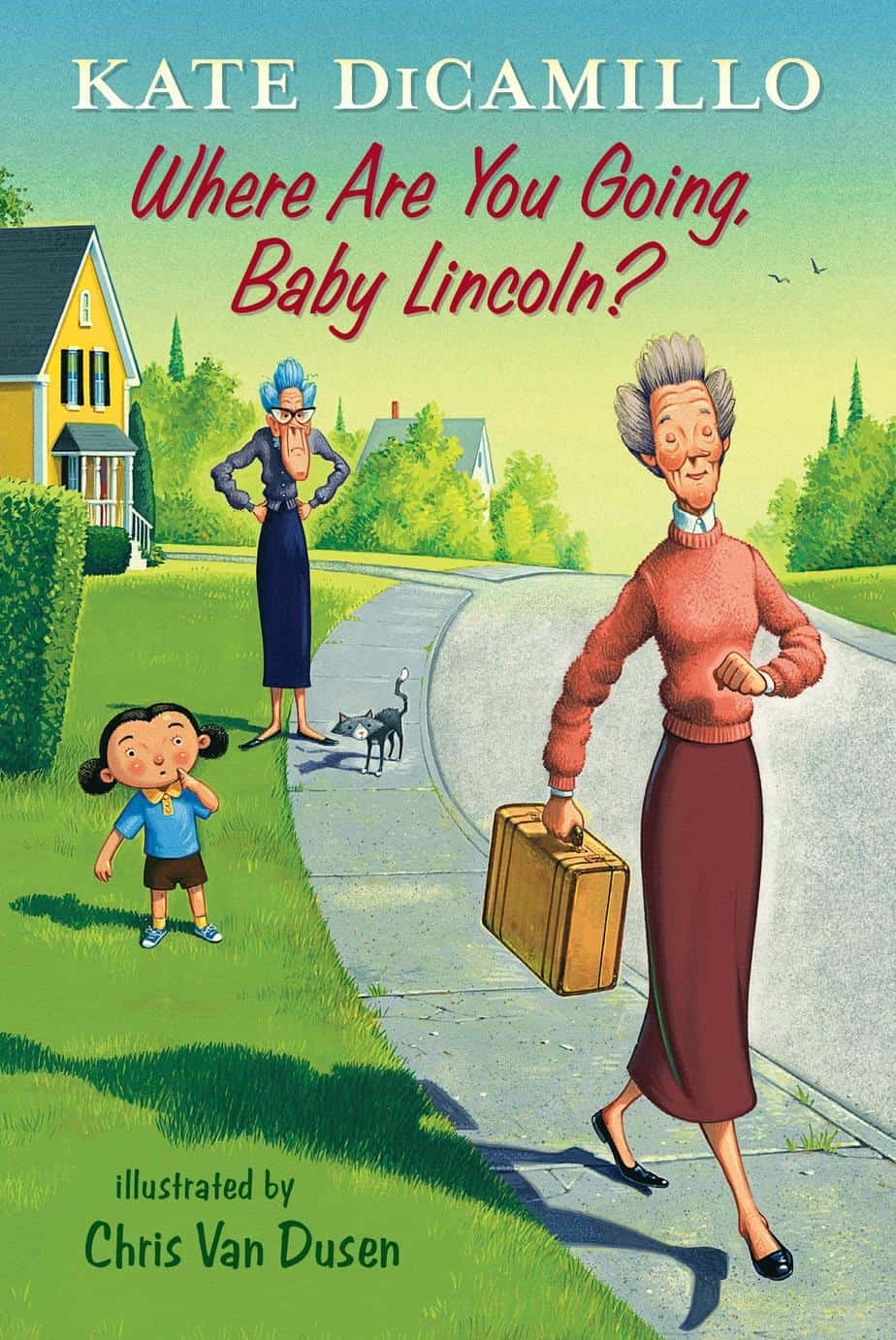
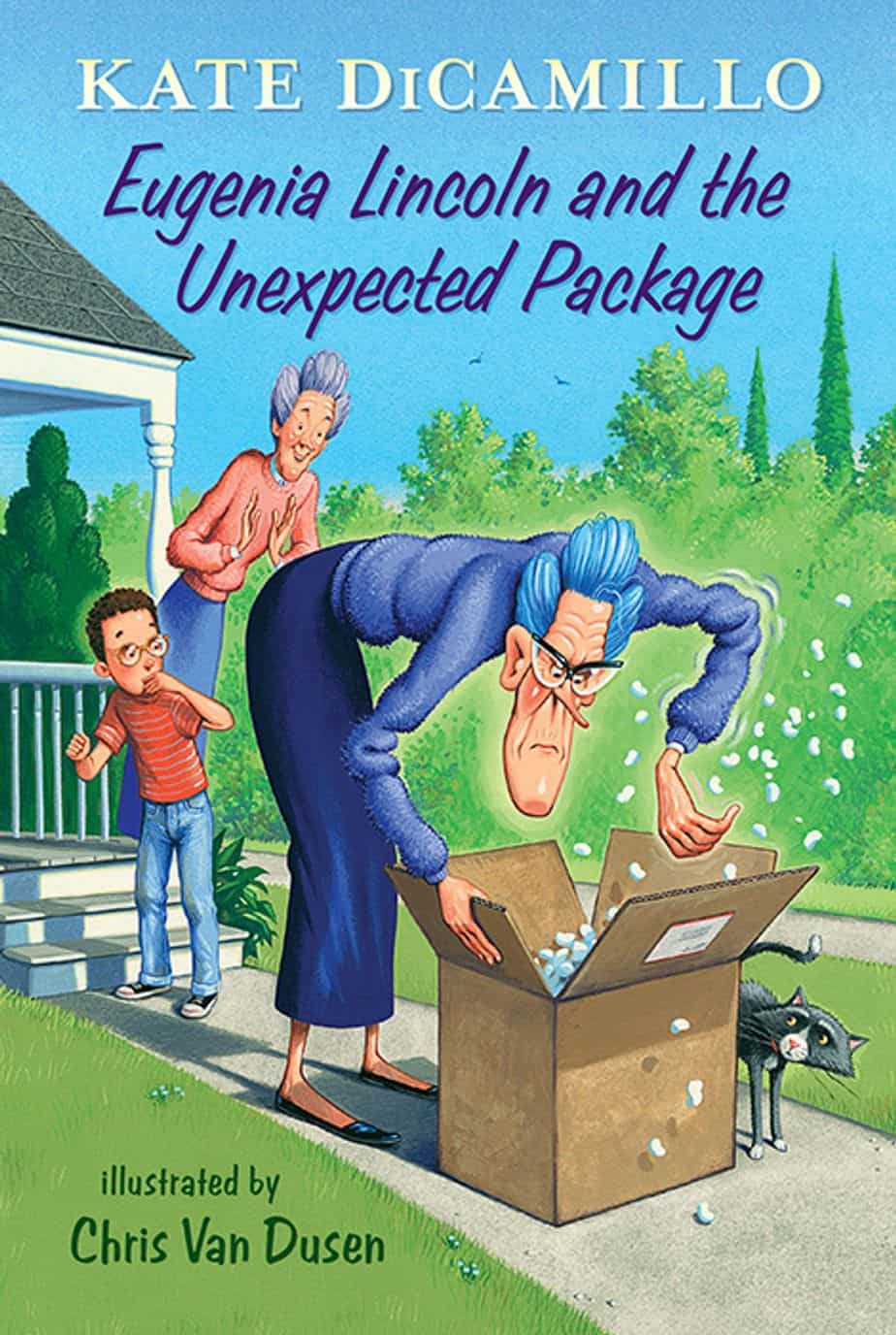
When reading “Daughters of the Late Colonel” I had no illustrations to guide me, and it wasn’t until I learned these women had a grown nephew that I realised they are proverbial ‘old maids’ rather than young adults just entering the marriage market.
NURSE ANDREWS
her laugh was like a spoon tinkling against a medicine-glass
Although Con and Jug are repressed, childlike adults, there are two women in this story who are the opposite: Nurse Andrew is one of them.
Reading between the lines, it seems Nurse Andrews has some reason to be commandeering all the Colonel’s final hours. Is she in love with him, hoping for an inheritance? We can’t tell what her motive is, but we do know that Nurse Andrews is riding roughshod over what the Colonel’s two daughters might want.
KATE
And proud young Kate, the enchanted princess, came in to see what the old tabbies wanted now. She snatched away their plates of mock something or other and slapped down a white, terrified blancmange.
The line about the ‘white, terrified blancmange’ is a classic Katherine Mansfield line. This is an example of a transferred epithet — it is not the blacmange that is terrified; it is the sisters, of course. As a rhetorical device, the transferred epithet is usually used for comedic effect. (When written straight it tends to be funny by accident.)
It’s hard to fathom these days that a household could have the money to hire a maid/cook yet still be pinching pennies when it comes to using too much butter. This speaks to how buying power has shifted; just two generations ago, food used to be one third of average household income. These days it’s a tenth, but only the most wealthy of families have the money to hire a cook. Wages have gone up.
Notice how the sisters are compared to cats (‘old tabbies’). Mansfield very often compares women to cats and birds. Even the hired help has inverted the expected social hierarchy; this house belongs to Con and Jug, yet it is Kate who has the run of the house, very much like the nurse, who was presumably only in the house for a short time and still managed to ride right over the two invisibilised daughters.
Mr. Farolles
The clergyman who comes to the house and offers communion. I wondered why this scene was included. I believe it’s for two reasons:
To contrast his nice, easy-going manner with that of the Colonel, and also as an example of something we’re told later: The two spinster sisters have only ever met former friends of their fathers and clergymen. So here they are, meeting a clergyman. It’s not the slightest bit flirtatious.
Mr. Knight
I’ll run round to our good friend Mr. Knight,” said Mr. Farolles soothingly. “I will ask him to come and see you. I am sure you will find him very helpful indeed.”
I’m not altogether clear who Mr Knight is, but his function must be this: This is a man of the vicarage who they all know, and now that the spinster sisters are without a patriarch to guide them, the clergyman has suggested this guy.
He does not suggest: Doing things for themselves. He is not about to guide the sisters in how they might run their own household, manage their own finances. No, the best he can do in this system is to replace the father with another acquaintance patriarch.
Mansfield writes him in knowingly. The fact that she never rounds him out (or gives us a single detail other than his name) underscores precisely how unimportant he is to the spinster sisters. He’s just another man. Yet here he is, invited into their lives by the clergyman.
COLONEL PINNER
The fact that he’s a colonel, no first name given, indicates he’s a tough man, hardened by the military. He’s the archetype of an army man who runs his home the same way.
We now have words to describe people who behave like Colonel Pinner: controlling and abusive. Back then, he was simply at the extreme end of ‘patriarch’.
What do we mean when we talk about patriarchy?
- Older men have power over women and also over younger, less powerful men.
- Carol Pateman describes a more modern form of patriarchy: fraternal patriarchy (or fratriarchy). Horizontal bonds between men to have power over women in order to dominate everyone who is not a man (mostly women).
Colonel Pinner is an example of the former kind of patriarch. Colonial patriarchy still exists today, but its power has been somewhat diminished, replaced by the less obvious kind.
The old patriarchy’s stand-out accoutrements are his stick and his top hat. The top hat has long been a symbol of colonial patriarchy. The discussion regarding the hat at the beginning of the story is about more than just a hat: A hat must fit its wearer. Can anyone else really wear this hat? He’d have to be an extreme patriarch, otherwise it wouldn’t seem right.
We learn of his controlling nature at this sentence:
Josephine had had a moment of absolute terror at the cemetery, while the coffin was lowered, to think that she and Constantia had done this thing without asking his permission.
“Daughters Of The Late Colonel” by Katherine Mansfield
Mansfield gives us a single flashback scene to Colonel Pinner. For storytelling purposes this is important, because after hearing about him, the reader is curious to see the man in action. We see him with a visitor, how he condescends and demeans everyone, especially his daughters. Mansfield is sure to make use of that stick to full dramatic effect. (Her penchant for the theatre comes in handy in her writing.)
BENNY
“Come, Jug,” said Constantia, still with that awful callous smile; and Josephine followed just as she had that last time, when Constantia had pushed Benny into the round pond.
“Daughters Of The Late Colonel” by Katherine Mansfield
In Ceylon, married to a woman called Hilda, who Con and Jug haven’t met.
CYRIL PINNER
Benny’s grown son, living in London. Jug and Con’s nephew. Jug and Con want Cyril to have their father’s gold watch. Cyril has sent a letter, I’m assuming of condolence, which was received as quite ‘a blow’ by Jug and Con:
What a blow his sweet, sympathetic little note had been! Of course they quite understood; but it was most unfortunate.
“Daughters Of The Late Colonel” by Katherine Mansfield
Perhaps he wasn’t able to come home for the funeral? After seeing in the flashback how the Colonel treated his grandson, I’ve filled in that blank for myself. (Mansfield liked her readers to fill in the blanks.)
Unfortunately for Con and Jug, they are now required to deal with the aftermath of the Colonel’s death with no help whatsoever. That his aunts might require his support does not cross the young man’s mind. His visits have always been as seldom and brief as possible.
AUNT FLORENCE
Only mentioned in passing. This was presumably another spinster woman, who became Con and Jug’s mother-figure after their mother died.
MRS PINNER
The feather boa suggests a fashionable, glamorous woman, at least in her youth. The sisters barely remember her, and her image is suffused with the flipside of glamour: Mysteriousness and danger. Her feather-boa appears to them like a snake. They clearly don’t remember her motherliness.
NARRATION
“Daughters of the Late Colonel” is said to be an excellent example of Mansfield’s parallax technique. This is when a writer offers the reader more than one viewpoint of the same situation.
Towards the end there is a glimmer of hope, triggered by a seemingly trivial occurrence. The sisters have been accustomed to bribe the organ-grinder to go away, as his noise distressed their father; but it strikes them that they will never have to resort to such behaviour again. At this precise moment the sun – almost tentatively – ventures into the room: ‘On the Indian carpet there fell a square of sunlight, pale red; it came and went and came – and stayed, deepened – until it shone almost golden’. Simultaneously the barrel-organ scatters ‘[a] perfect fountain of bubbling notes’. As Constantia looks at her favourite Buddha on the mantelpiece, his smile suggests that he knows a special secret; something that Constantia might be on the verge of grasping. ‘The thieving sun’ touches Josephine, too; then it retreats behind a cloud and the story ends suddenly.
It is widely regarded as one of Mansfield’s finest works, and generations of readers have appreciated its delightful comic touches: for example, the hilarious account of the women urging their nephew Cyril to talk to his grandfather about meringues. Nevertheless, the reader is left with a lingering sense of anxiety. What will become of Josephine and Constantia? Will they ever be able to enjoy meaningful lives? Claire Tomalin, after comparing them to ‘beached whales’, stresses that Mansfield does not tell the story ‘satirically at the expense of the sisters’. Rather, she writes affectionately: ‘and so quietly, without pity or emphasis, that it is quite possible to enjoy its jokes about early twentieth-century genteel womanhood and miss the devastating nature of what it is saying’.[6] Indeed, Mansfield did voice her concern about people’s failure to assimilate her point. Thomas Hardy admired the piece, yet invited a sequel. Mansfield found this reaction strange, and told her friend, Dorothy Brett: ‘I put my all into that story and hardly anyone saw what I was getting at. Even dear old Hardy told me to write more about those sisters. As if there was any more to say!’ In a letter to the writer William Gerhardi she elaborated:
All was meant, of course, to lead up to that last paragraph, when my two flowerless ones turned with that timid gesture, to the sun. “Perhaps now”. And after that, it seemed to me, they died as truly as Father was dead.
An Introduction To Katherine Mansfield’s Short Stories
SETTING OF “THE DAUGHTERS OF THE LATE COLONEL”
PERIOD
1920s or thereabouts
DURATION
The days after a man’s death, with a few flashbacks, stretching back as far as the sisters’ youthful adulthood. Mansfield spools the flashbacks out like thread, starting with the more recent (the behaviour of the nurse in the days before the father’s death) and eventually taking us to the resonant scene of the suitor who left a note too faded to read, then even further back to half-imagined memories of the mother.
LOCATION
Somewhere within travelling distance of London, since the nephew comes from London for afternoon tea, and doesn’t seem to have been travelling for long.
ARENA
The spinster sisters live most of their lives inside a small cottage. When other arenas are mentioned, it’s probably where someone else is. The spinsters’ brother, in contrast to their very narrow geographical space, has flown afield so far that he’s even gone to India. We can deduce that he went to India to get away from his overbearing father, but is also a comment on how men enjoy the freedom to do this, whereas unmarried women did not.
The sisters have never been anyone or met anyone different, which comes across in the xenophobic conversation they have about ‘natives’ who steal gold watches out of oddly-disguised packages sent to Ceylon.
WEATHER
At one point sunlight is used (ironically) as a horror trope as it penetrates the house from outside, like any number of chimney demons or monsters at the window in other genres of tale.
TECHNOLOGY CRUCIAL TO THIS PARTICULAR STORY
The barrel-organ, the photos. Photography was still fairly new in this era. In the age of smartphone cameras it’s easy to forget how creepy it felt when images first existed of dead people. To some Aboriginal Australians and Torres Strait Islanders, this feeling persists, for various reasons specific to each group. That’s why here in Australia, TV programs and documentaries are regularly prefaced with the following:
WARNING: Aboriginal and Torres Strait Islander viewers are warned that the following program may contain images and voices of deceased persons.
Indigenous cultural protocols: what the media needs to do when depicting deceased persons
LEVEL OF CONFLICT
The domination which happens in the home is an exaggerated microcosm of the patriarchy which runs the whole of society.
THE EMOTIONAL LANDSCAPE
If haunting signals the return of something that has been repressed, then silenced narratives(ranging from the familial to the national to the diasporic) are articulated – encrypted – in the haunting presences that signal anxieties about multiple and/or diasporic identities and their disappearance.
Justin Edwards, who is actually talking about Edward Said’s travel memoir, Out of Place (2008)
Though genuinely repressed by their father, his power of them was at least partly imaginary. In his old age he was hard of hearing — cranky, sure — but he’d done such a number on his daughters that they were psychological prisoners as much as they were literal prisoners of the house.
Coercive control creates invisible chains and a sense of fear that pervades all elements of a victim’s life. It works to limit their human rights by depriving them of their liberty and reducing their ability for action. Experts like Evan Stark liken coercive control to being taken hostage. As he says: “the victim becomes captive in an unreal world created by the abuser, entrapped in a world of confusion, contradiction and fear.”
Women’s Aid
Some common examples of coercive behaviour are:
- Isolating you from friends and family (The daughters have so few visitors that they overprepare for visits from their nephew.)
- Depriving you of basic needs, such as food (The daughters worry about quantities and rationing of butter)
- Monitoring your time (Mansfield mentions time all through this story)
- Monitoring you via online communication tools or spyware
- Taking control over aspects of your everyday life, such as where you can go, who you can see, what you can wear and when you can sleep
- Depriving you access to support services, such as medical services
- Repeatedly putting you down, such as saying you’re worthless
- Humiliating, degrading or dehumanising you (The Colonel requires the daughters to be invisible, even though he’s so hard of hearing he wouldn’t hear them anyway.)
- Controlling your finances
- Making threats or intimidating you (He intimdates using the stick.)
STORY STRUCTURE OF “THE DAUGHTERS OF THE LATE COLONEL”
PARATEXT
THE TITLE
Publishing has recently been through a phase of titles which position women in relation to men, perhaps starting with The Time Traveller’s Wife, a runaway bestseller. Many, many more titles appeared — stories about wives and daughters.
At face value, these titles might suggest women are being dismissed. Don’t these women have titles of their own? Why always mention them in relation to men? But the stories within subvert the expectation proffered by the title because these men are most often backgrounded (or dead, in this case). The stories are in fact about the women, and very often about their transformation from dependence to independence.
Mansfield had trouble settling on titles, and this one was originally called something else:
Originally, Mansfield intended to call the story ‘The Non-Compounders’. In her teens she had travelled to Britain from her home in Wellington, New Zealand, to study at Queen’s College, London, and the term ‘non-compounders’ was applied to students who attended classes without being officially registered. It is applicable to Josephine and Constantia because they are members of society yet are marginalised figures within it.
An Introduction To Katherine Mansfield’s Short Stories
SHORTCOMING
Jug and Con are the product of an abusive patriarch in a patriarchal world, and have never found their own voice. They remain childlike in their inability to make decisions for themselves. They even tip-toe around their own home, not even wanting to bother the cook for a cup of tea, settling instead for hot water straight out of the kettle. (That’s how I make a cup of tea, but not the etiquette expected of a 1920s maid, who would use the intermediary of a decorative jug.)
DESIRE
It becomes clear over the course of this story that the Colonel, as a personality, is not one bit missed. HIs demise has led to the opportunity for freedom. The sisters are slowly realising that they are allowed to desire things for themselves. These are women who live small lives. Their wishes are comedically small. They take great delight in providing delicious afternoon teas for their nephew, who reluctantly visits from London.
OPPONENT
The Colonel is the Minotaur opponent.
But really, everyone who enters the house is blustering and authoritative by contrast to Con and Jug. When you can’t assert yourself, everyone else will inevitably assert themselves upon you. Some even take advantage of you. The cook has realised that she can dispense with the more nuisance part of her job. She’s supposed to ask the ladies of the house what they’d like for dinner, but she’s not really asking. The ‘boiled or fried?’ interaction shows how she’s already made up her mind what’s for dinner and how she’s going to cook it. Her asking is a formality, for appearances only.
PLAN
First the sisters decide to clear the house of their father’s ghost-like lingering presence. The next big decision: Lay off the bossy, slightly scary cook.
THE BIG STRUGGLE
The easiest stories to write are those with an obvious battle scene, perhaps a death would happen at this point, or a literal fight scene. It’s more difficult to plot a satisfying story such as one, in which the death has already happened, and the characters are not go-get-em types and character arc is small.
So what has Mansfield done here, to give us the same feels as a more generic story, with its obvious build and letdown?
This is where the horror tropes come in handy. The house gets more and more ominous until the sisters feel scared to stay in it, even though there’s no one to fear now but themselves, infused with the abusive ghost of their dead father.
The horror sequence starts at the opening to chapter 12:
But at that moment in the street below a barrel-organ struck up. Josephine and Constantia sprang to their feet together.
I’m actually with Colonel Pinner on wanting to pay sixpence to not have to hear that thing, but that’s by the by. Further horror tropes:
The personification of sunlight.
The sunlight pressed through the windows, thieved its way in, flashed its light over the furniture and the photographs. Josephine watched it. When it came to mother’s photograph, the enlargement over the piano, it lingered as though puzzled to find so little remained of mother, except the ear-rings shaped like tiny pagodas and a black feather boa.
The daughters are so unused to anyone penetrating the home that even sunlight feels like an invasion.
Next we’ve got the photograph which seems alive, or active in some way (actively dying):
Why did the photographs of dead people always fade so? wondered Josephine. As soon as a person was dead their photograph died too.
The snake:
Josephine remembered standing on a chair and pointing out that feather boa to Constantia and telling her that it was a snake that had killed their mother in Ceylon. . . .
Next, the outside world infiltrates the body:
Some little sparrows, young sparrows they sounded, chirped on the window-ledge. Yeep–eyeep–yeep. But Josephine felt they were not sparrows, not on the window-ledge. It was inside her, that queer little crying noise.
ANAGNORISIS
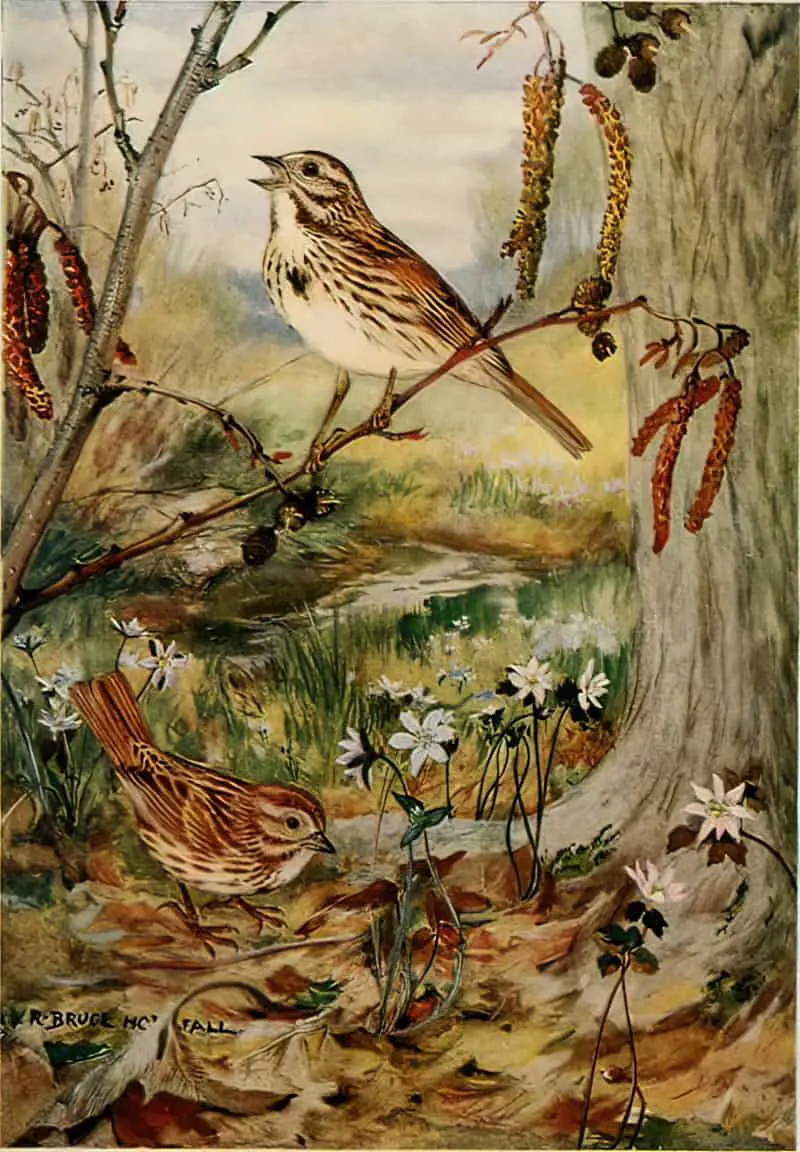
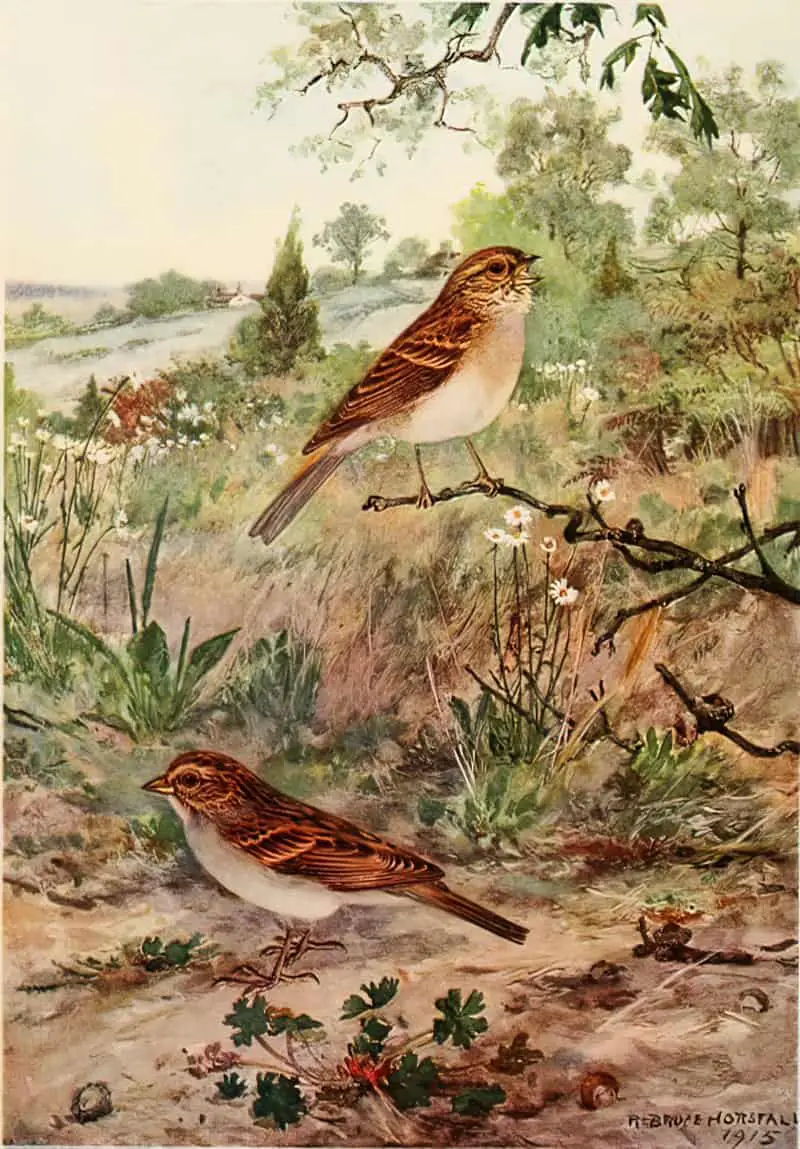
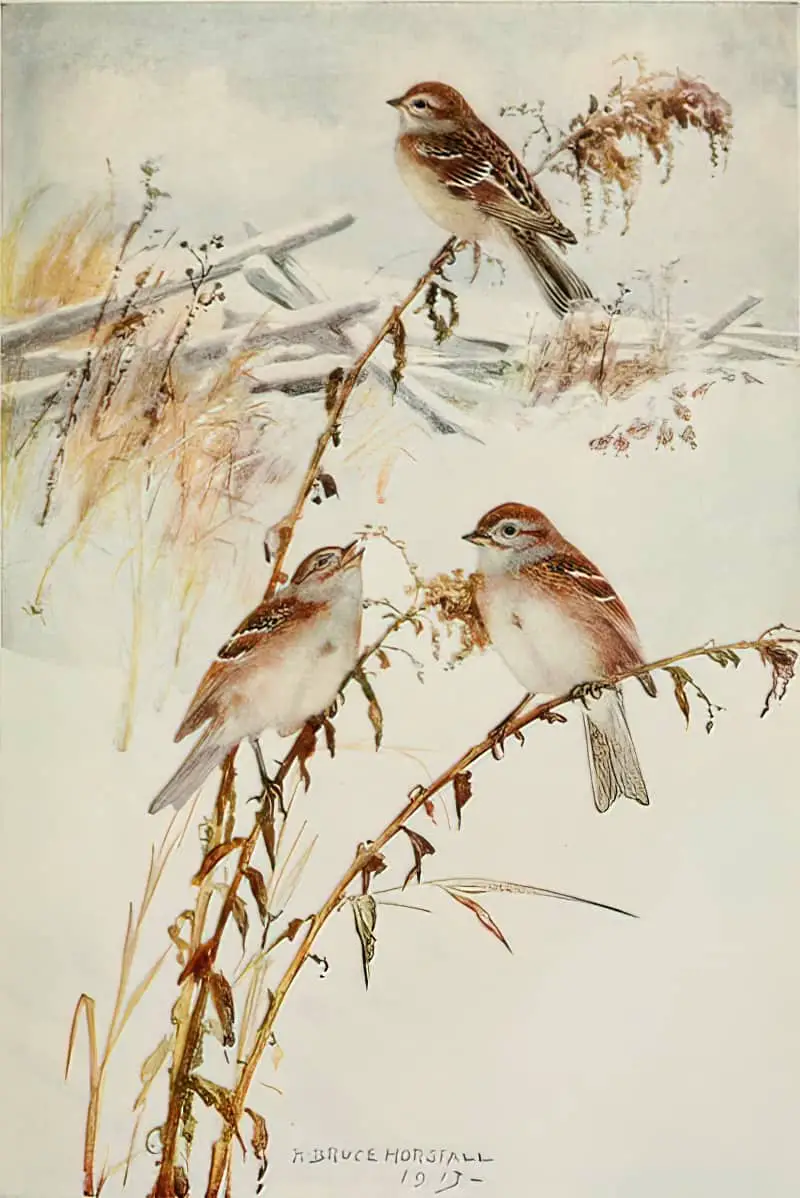
Some of Mansfield’s characters seem to have a revelation then we’re told they’ve forgotten all about it. This is partly why Mansfield’s work is referred to as ‘Freudian’, drawing upon Freud’s theories of suppression and repression. (“Her First Ball“, “The Doll’s House“)
This repression is sometimes provoked by something trivial which causes some glimmer of hope. “Daughters of the Late Colonel” is a good example of this latter kind of Mansfield ending.
Much of the dark comedy in “Daughters Of The Late Colonel” derives from two sisters ostensibly in the throes of grief, but worried about trivial matters of appearance. These are two women who have never outgrown a youthful tendency to imagine how they look to others from the outside:
Oh, what a difference it would have made, what a difference to their memory of him, how much easier to tell people about it, if he had only opened both! But no–one eye only. It glared at them a moment and then . . . went out.
But the idea of a little Communion terrified them. What! In the drawing-room by themselves–with no–no altar or anything! The piano would be much too high, thought Constantia, and Mr. Farolles could not possibly lean over it with the chalice.
“Daughters Of The Late Colonel” by Katherine Mansfield
This aspect of comedy is known as ‘misdirection’. (See more about that here, in which I collect examples from children’s stories.) Misdirection comedy typically occurs when a character doesn’t see what’s right in front of them, but focuses on the complete wrong thing. This thing is obvious to the audience. The more obvious it is to the audience, the greater the gap between audience and character, and the funnier it is.
The humour is dark when the character’s blindness does not allow them to live their best life. In this case, the older daughters can’t see that their overbearing father was in fact abusive, and that he no longer has any power over them. They are still struggling to make decisions for themselves.
Eventually they decide to lay off the cook, who is not sparking joy.
Although this points towards the spinsters’ ability to move on, the tragedy is that they’ll never relive their younger years.
NEW SITUATION
At the end of the story, the sisters have decided to lay off the cook, but we don’t hang around long enough to see that happen.
Do you think that’s what happens? Knowing the cook, I expect she’s very happy working here, as she has the run of the house. An unusual situation for a servant. I think if she told these sisters in no uncertain terms that she has six hungry mouths to feed at home, Con and Jug would feel bad and keep her on forever.
EXTRAPOLATED ENDING
I would actually quite like a sequel in which Mr Knight comes round to the house, doles out all kinds of unhelpful advice and the sisters tell him where to go. I doubt that happens, though. Mr Knight will be readily accepted by the sisters and let’s hope he doesn’t fleece them out of their inheritance, such as it is, because these women have no earning power of their own and I very much doubt the Colonel ever taught them how to balance the books.
RESONANCE
Biographers have said of Katherine Mansfield that people either loved her or despised her, with the exception of two friends: James Joyce and Virginia Woolf, who were both able to see her complex humanity. It is interesting that Virginia Woolf’s most resonant character is another middle-aged woman dealing with the invisibility of middle age — Mrs Dalloway, of course.
There are various types of invisibility which are gendered. The first is a combination of misogyny and ageism.
The Invisibility of Older Women: As they age, women experience less public scrutiny—and entertain a wider set of choices about when and how they are seen from The Atlantic
Jenny: ‘Middle-aged women aren’t invisible, they’re just ignored‘: Comedian Jenny Eclair talks to Hannah Stephenson about about her new book on the menopause, television work and why she still loves the buzz of live gigs from The Belfast Telegraph
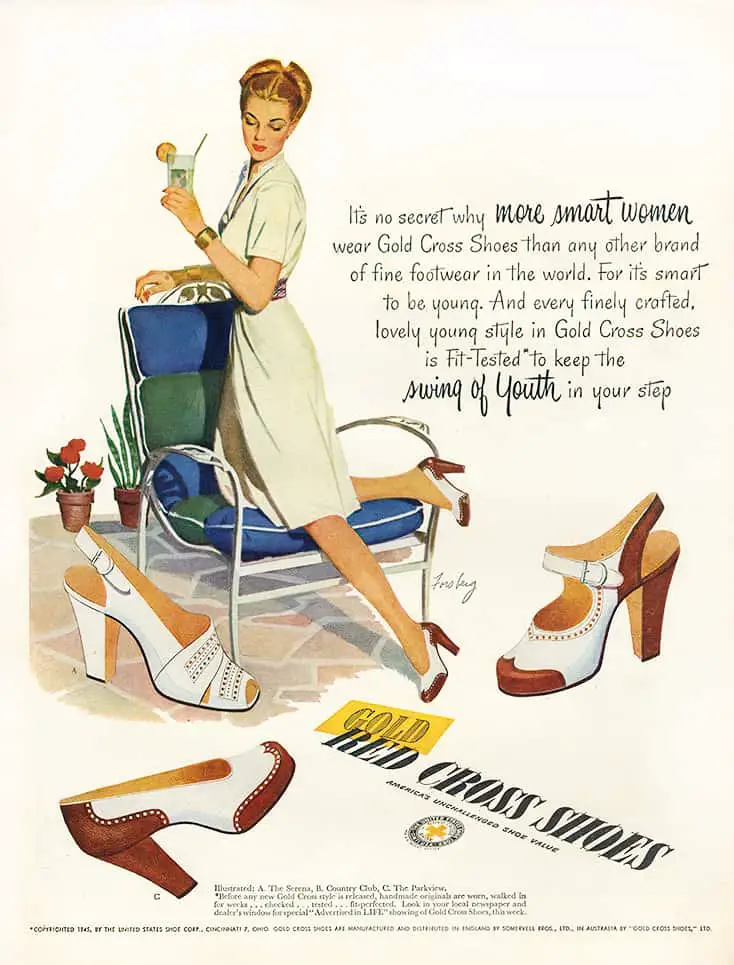
Then there’s the sort of invisibility which comes from absence in data. This in turn affects decisions about how the world is run, and who the world is for.
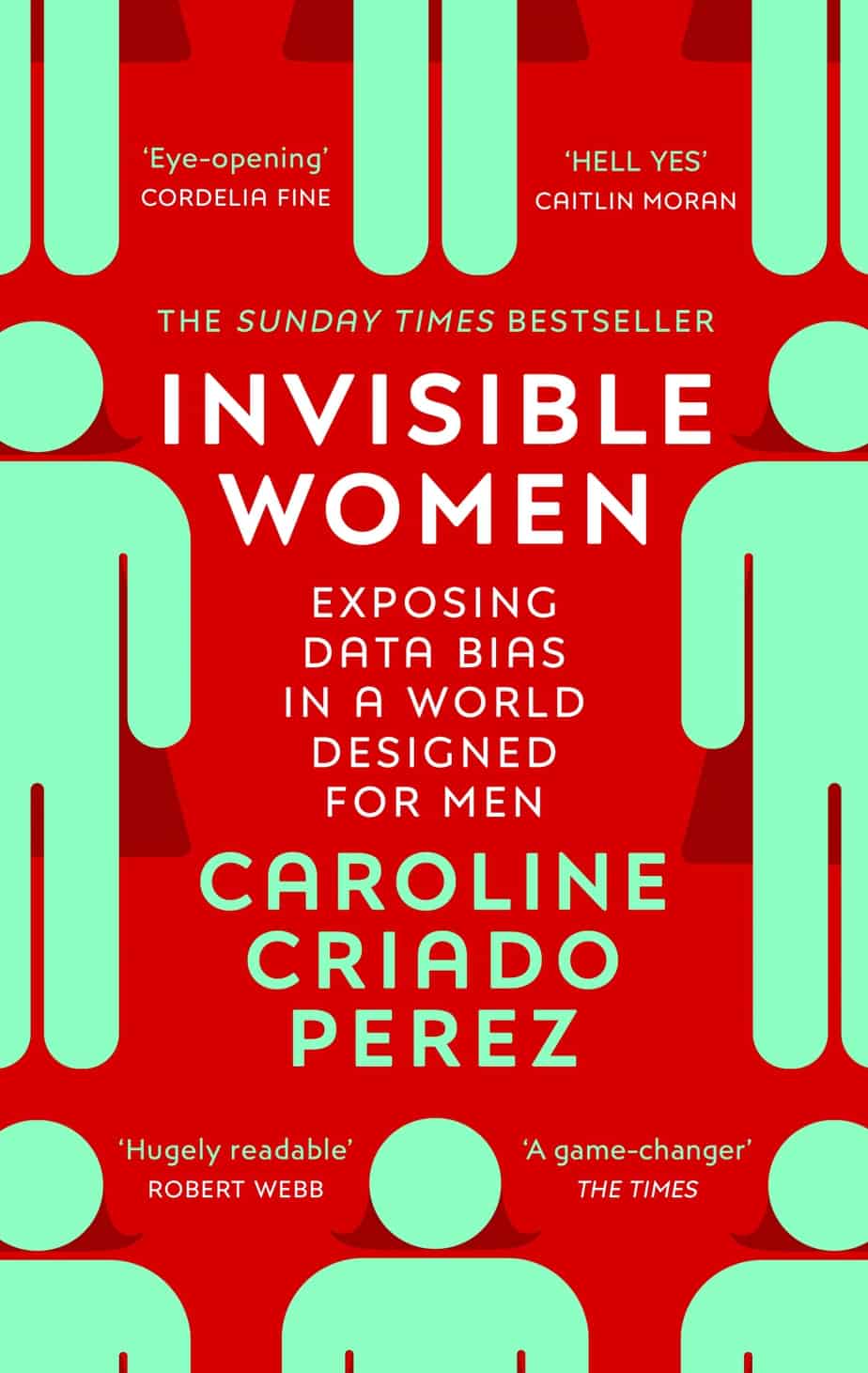
COMPARE AND CONTRAST
Katherine Mansfield has painted a picture of a coercively controlling father. Alice Munro painted a picture of a coercively controlling romantic partner in her story “Queenie“.
When Munro wrote that story, the dynamic of ‘coercive control’ didn’t have a name. It’s amazing how accurate a picture Munro paints of a dynamic which has since been very well documented and which plays out in predictable ways.
